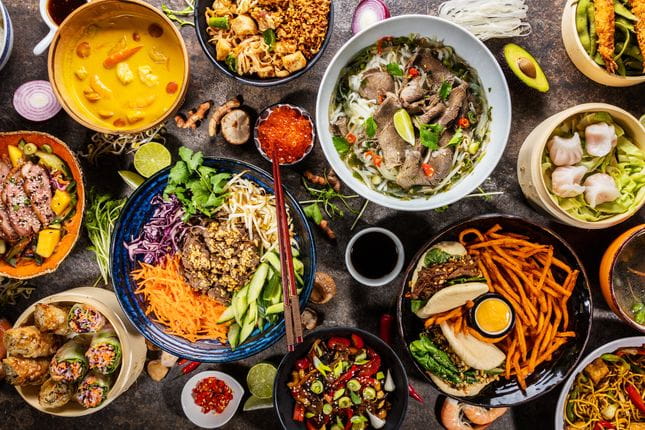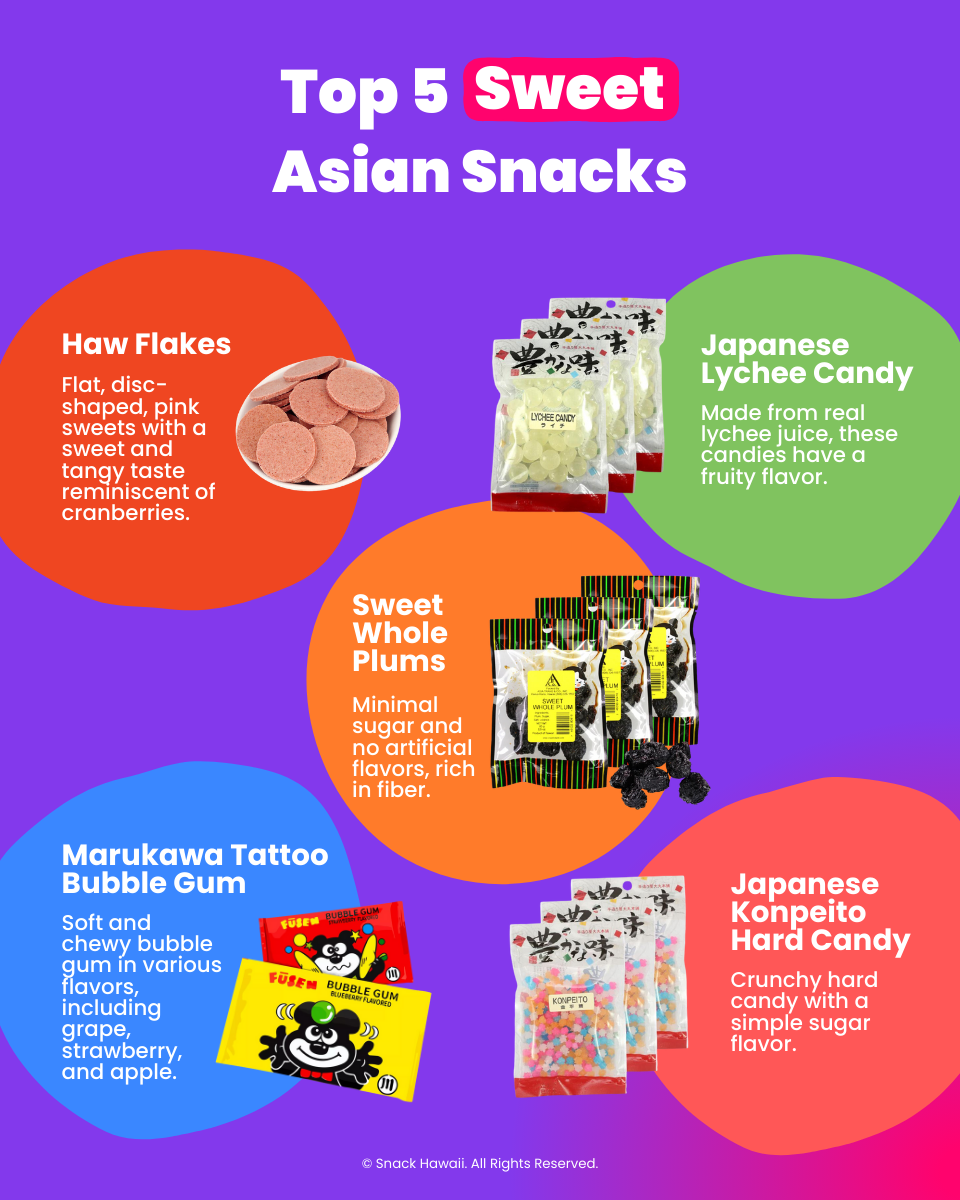Top Asian Flavors You Need to Try
Asian cuisine is celebrated worldwide for its diverse, bold, and unique flavors. The richness of spices, herbs, and ingredients creates a culinary experience like no other. Whether you are a food enthusiast or someone who loves to experiment with new dishes, exploring the top Asian flavors can elevate your cooking to new heights.
In this article, we’ll take you on a flavorful journey through the most popular Asian flavors, their origins, and how to incorporate them into your cooking. From the tangy zest of lime to the spicy heat of chili, Asian cuisine has something for everyone. Let’s dive in!
1. Sourness and Tang from Lime and Tamarind
Asian dishes are known for their balance of flavors, and sourness plays a significant role. Lime and tamarind are two of the most commonly used ingredients that bring this zesty tang to the table.
Lime
Lime is a common ingredient in Southeast Asian cuisine, particularly in dishes from Thailand and Vietnam. Its sharp acidity enhances the freshness of various dishes. It’s often used in pho, pad Thai, and even in cocktails like the famous Margarita. The zest of lime adds an aromatic twist, while the juice adds a sharp, refreshing contrast.
Tamarind
Tamarind has a distinct sweet-and-sour flavor, which is a hallmark of many Indian and Thai recipes. Its tangy essence is found in curries, sauces, and even chutneys. The rich, deep flavor of tamarind pairs perfectly with savory dishes, balancing the intensity of spices.

2. The Spicy Heat of Chili
If there’s one thing that stands out in many Asian dishes, it’s the spicy heat from chili peppers. From mild to fiery hot, chili peppers are an integral part of Asian flavors, particularly in countries like India, Thailand, and China.
Thai Bird’s Eye Chili
Thailand is renowned for its use of bird’s eye chilies, which pack an intense punch. These small but mighty chilies are often used in som tam (papaya salad) or red curry to add a fiery kick.
Indian Red Chili
In India, red chili powder is used extensively in curries, pickles, and gravy dishes. The spiciness level can vary, but it always brings an unmistakable depth of heat.
Chili isn’t just about spiciness—it also enhances the umami and sweetness of dishes, creating a balanced, layered flavor profile.
3. Sweet and Savory Soy Sauce
Soy sauce is a cornerstone of many Asian cuisines, particularly in Chinese, Japanese, and Korean dishes. The depth of umami in soy sauce adds a rich, savory dimension to any dish.
Types of Soy Sauce
-
Light soy sauce: This is a more delicate, saltier version, often used in stir-fries, marinades, and dipping sauces.
-
Dark soy sauce: Dark soy sauce is thicker and less salty, with a slightly sweet undertone. It is typically used to add color and flavor to braised dishes.
Soy sauce’s versatility makes it the perfect accompaniment to almost anything—from sushi to dumplings.
4. Fragrant and Earthy Garlic and Ginger
Garlic and ginger are the dynamic duo of Asian cooking. These two ingredients bring an earthy, aromatic quality to a wide variety of dishes.
Garlic
In Chinese cuisine, garlic is a key component in stir-fries, sauces, and dips. The pungent, savory flavor of garlic is often balanced with soy sauce or sesame oil, making it essential in Kung Pao chicken and mapo tofu.
Ginger
Ginger offers a slightly spicy, refreshing quality that is perfect for cutting through rich dishes. It’s used extensively in Indian curries, Japanese ramen, and Thai soups like tom yum. Fresh ginger has a sharper taste, while dried ginger provides a more subtle, warming flavor.

5. The Umami of Fish Sauce
Fish sauce is a quintessential ingredient in Southeast Asian cuisine, especially in countries like Thailand, Vietnam, and Cambodia. It’s made by fermenting fish with salt, producing a strong, savory flavor.
How Fish Sauce Enhances Dishes
The salty, umami-rich flavor of fish sauce is essential for making pho or pad Thai. It adds depth to the dish without overpowering it, offering a subtle complexity that transforms simple ingredients into something extraordinary.
Fish sauce is also used in salads, soups, and dips, adding a natural saltiness and enhancing other flavors like sweetness and sourness.
6. Coconut Milk for Creaminess and Sweetness
Coconut milk is a staple in many Asian dishes, particularly in Southeast Asia. Its creamy texture and slightly sweet flavor bring balance to spicy and savory dishes.
Thai and Indian Cuisine
In Thai and Indian curries, coconut milk is a base ingredient that adds richness and smoothness. It’s often paired with spices like curry leaves, turmeric, and coriander to create a soothing, well-rounded dish.
Coconut milk is also used in desserts, offering a velvety sweetness. It’s a key component in popular treats like Thai sticky rice with mango.

7. The Herbaceous Touch of Cilantro and Basil
Fresh herbs are a hallmark of many Asian dishes, and cilantro and basil are two herbs that take center stage.
Cilantro
Cilantro, also known as coriander, has a bright, citrusy flavor that cuts through the richness of dishes. It’s a popular garnish in Mexican and Indian cuisines, and it’s often used in salads and salsas.
Thai Basil
Thai basil, with its sweet, slightly spicy flavor, is commonly used in Thai and Vietnamese cooking. It pairs beautifully with stir-fries, noodle soups, and curries.
Tips for Using Fresh Herbs
-
Use fresh herbs to brighten up dishes just before serving.
-
Add cilantro to salsas or soups for a fresh burst of flavor.
-
Thai basil is a key ingredient in dishes like pad gra pao (stir-fried basil with chili).
Frequently Asked Questions (FAQs)
What is the most popular Asian flavor?
One of the most popular and versatile flavors in Asian cuisine is umami, which is present in ingredients like soy sauce, fish sauce, and miso.
How can I make my dishes spicier?
To increase the heat in your dishes, you can add chili peppers, chili oil, or red pepper flakes. Experiment with different types of chilies to find your preferred level of heat.
What is the secret to a great Thai curry?
The key to a great Thai curry lies in balancing the sweetness, spiciness, and sourness. Ingredients like coconut milk, lemongrass, and galangal bring out the depth of flavors.
Conclusion
The world of Asian flavors is incredibly diverse, offering a wealth of taste experiences that are both exciting and satisfying. Whether you’re a fan of spicy chilies, tangy tamarind, or the umami richness of soy sauce, there’s no shortage of ways to bring these vibrant flavors into your cooking.
By experimenting with these ingredients, you can elevate your meals and introduce your taste buds to a whole new level of deliciousness. Embrace the boldness of Asian flavors and transform your kitchen into an exploration of global tastes.
Visit DUYTHIN.DIGITAL to discover automation tools that can help streamline your business while you focus on your culinary adventures.




